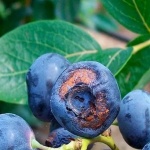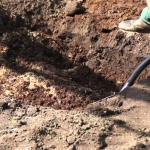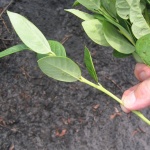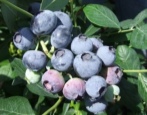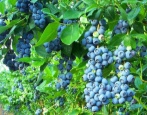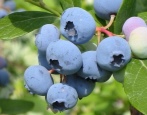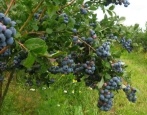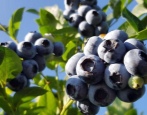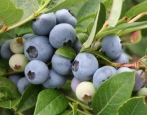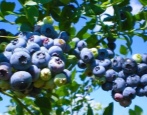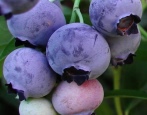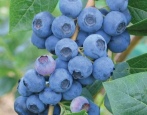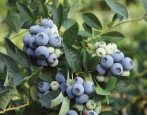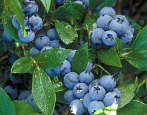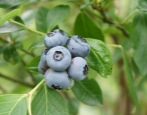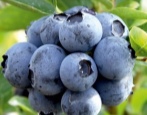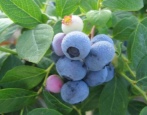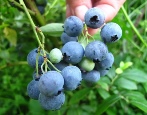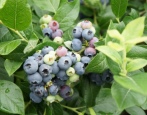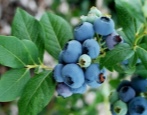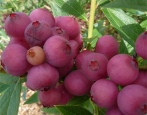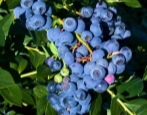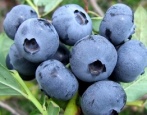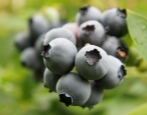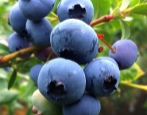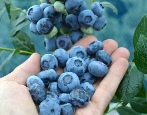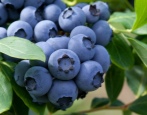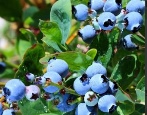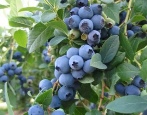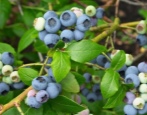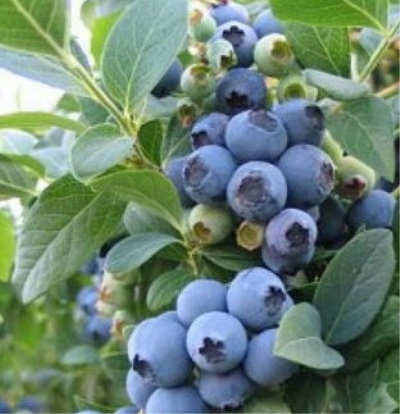
- Authors: USA
- Name synonyms: Vaccinium corymbosum Chippewa
- Ripening terms: early
- Growth type: medium-sized
- Bush height, m: 0,8-1
- Taste: very sweet, with 100% wild blueberry flavor
- Average yield: 3.5 - 4.5 kg / bush (up to 6)
- Fruit size: medium or large
- Fruit color: light blue
- Description of the bush: tight, upright, compact
Chippewa blueberries are a very hardy hybrid that produces huge yields of large, sweet blue fruits in mid-summer. It requires highly acidic soils, needs excellent drainage with good mulch.
Breeding history
Chippewa is a blueberry variety that was developed in 1996 at the University of Minnesota in the United States of America. The purpose of its creation was the endurance of the culture in cold climates. So that the variety can withstand harsh cold weather, down to -30 ° C. Blueberries were bred as a semi-tall variety, which means they are about half the size of traditional blueberries even at maturity. This variety is an interspecific hybrid.
Description of the variety
Chippewa blueberry bushes grow to a height of approximately 0.8 to 1 meter, while traditional blueberry bushes can grow from 1.2 to 1.8 meters.
Chippewa features graceful clusters of white bell-shaped flowers with pink shells that hang from branches in mid-spring. The bush has dark green foliage throughout the season. The shiny oval leaves are thicker than other varieties, turning bright red or bright orange in the fall. In the middle of summer, the plant is distinguished by an abundance of gorgeous blue berries. Bushes often serve as decorative hedges.
It is a multi-stemmed, deciduous shrub with a vertically spreading type of growth. Its relatively fine texture sets it apart from other landscape plants with less sophisticated foliage. Even without pruning, the plant looks decent, it does not belong to the whimsical varieties. It has no significant negative characteristics.
It reaches its maturity fairly quickly. Provided the proper conditions are provided, the plant can be expected to live for about 20 years.
Fruit characteristics
The berries are bluish, 1.7-2 cm in diameter, very dense. The fruits ripen unevenly, which is not suitable for harvesting, but for consumption from the bush.
Taste qualities
Chippewa is a small shrub commonly grown for its taste. It produces clusters of blue, round berries that are usually ready to harvest in mid-summer. The berries have a sweet taste and a juicy texture. Sugar prevails in the taste, there is no sourness, there is a strong blueberry aroma.
Most often, berries are used in the following ways:
fresh look;
Cooking;
bakery;
canning - jam, preserves.
Ripening and fruiting
Ripening dates are early, mid-July - August. For more fruit, Chippewa blueberries should be planted alongside other semi-tall blueberries.
Yield
It can be expected that the bush will bear fruit from the second season, and will be the most productive by the third and fourth growing seasons, yielding an average of 3.5-4.5 kg of blueberries. With special care, you can achieve a yield of 6 kg.
Growing regions
In the US, these blueberries can be grown in zones 3-7 or in the north, such as Minnesota, southeast, western North Carolina, and northern Texas. Some growers even report successful cultivation in Zone 8, which includes virtually the entire US except Florida and southern Texas.
It is known that in our country it is ideal for the northern Urals, as well as for other regions with a similar climate.
Growing and care
Chippewa blueberries require acidic soil with a pH of 4.0-5.0, which can usually be achieved by mulching with needles. Growing larger berries requires 2.5 to 5.1 cm of rain per week.Due to their lower height and narrower spread, bushes can be located closer to each other than other varieties, approximately 1.2 to 1.5 meters apart.
This shrub is usually grown in a designated area of the yard. Grows best in full sun or partial shade. It is best suited for moderate to uniform humidity conditions, but does not tolerate standing water. It absolutely does not tolerate city dust and dirt, so it is better not to plant it in the appropriate areas or on the streets of cities, it will be useful to plant them in a relatively protected place.

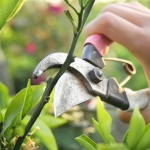
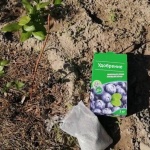
Disease and pest resistance
The variety has no serious problems with insects or diseases. Birds love berries, so you may need to cover the plants with a netting when they begin to ripen to protect the crop. Chlorosis (yellowing of leaves) can occur in high pH soils. Possible but uncommon illnesses include fire blight, root rot, anthracnose, cane sores, mold and botrytis. Blueberry maggots and cherry worms can infect the fruit.
